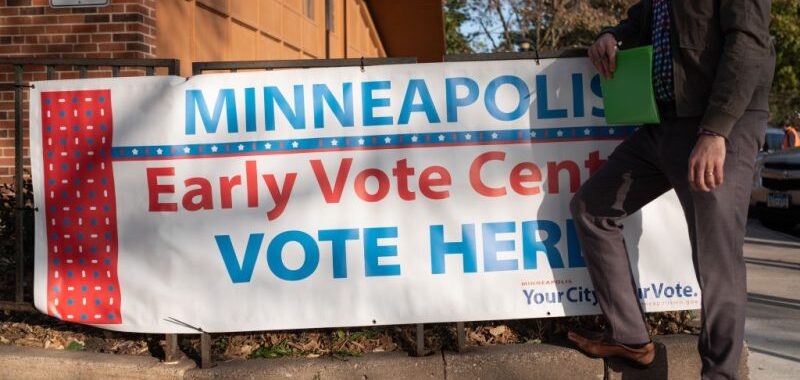(NEXSTAR) – The rate of voter turnout for the 2020 presidential election was among the highest in over a century, with nearly 67% of eligible voters heading to the polls on Nov. 3, 2020, according to the U.S. Census Bureau.
Some states, though, were really bringing up that average.
Data from the last few presidential elections suggests that a handful of states — usually led by Minnesota — have a far higher percentage of voter turnout than the national average in each election year. In 2020, for instance, approximately 79.21% of voting-eligible Minnesotans turned up to the polls, followed by Colorado with 76.69%, Oregon and Washington with 75.33% each, and Wisconsin with 75.04%, according to the University of Florida Election Lab, a resource overseen by Dr. Michael P. McDonald.
McDonald, a political science professor whose data has been cited by outlets including The New York Times and the Associated Press, has also compiled data from historical elections in his U.S. Elections Project, which makes clear a consistent trend among states that report their total ballots counted. (Some jurisdictions do not tally total ballots counted, a figure which accounts for all votes cast, including those with blank votes for the presidential office. Depending on the election year, that data may not be available for certain states.)
States with consistently high rates of voting in more recent elections include Colorado, Iowa, Maine, New Hampshire, Oregon, Washington and Wisconsin — but Minnesota still can’t be beat. The state had the highest rate of turnout among the voting-eligible population in every presidential election since 1980, which is the furthest back the UF Elections Lab offers data on state-by-state turnout.

As for why Minnesota is tops, the St. Cloud Times suggests it’s because the state allows for same-day registration up to Election Day, and often has close races for state leadership that results in high rates of engagement. (Minnesota, too, usually has the highest rate of voter turnout in midterm election years, according to the Elections Project.)
“Higher rates of volunteerism and social engagement in states like Minnesota are also associated with more active voters,” the St. Cloud Times further noted.
Less-restrictive voting laws may also contribute to higher engagement in some of the other top-turnout states, though not all have such policies. New Hampshire and Wisconsin, despite having generally high turnout rates, have actually become some of the most restrictive states for voters over the last few decades’ worth of election cycles, as determined by the Election Law Journal’s Cost of Voting Index.
Conversely, some of the states with the least restrictive laws have among the lowest voter turnout rates in presidential elections, according to reporting from states that tally their total ballot counts.
States with the lowest voter turnout in recent elections have frequently included Arkansas, South Carolina and Texas — which are considered more restrictive — but also Arizona, Nevada, New York and Hawaii, the latter of which is among the most accessible state for voters, per the Cost of Voting Index.
Still, the percentage of eligible voters in the U.S. who actually vote has risen consistently over at least the last decade, thanks in part to advance and absentee voting allowances.
“That’s resulted in a greater share of early votes being cast each election cycle,” McDonald told the Associated Press this week.
Vote.org also reported in September that “a record-breaking percentage of younger voters” had registered ahead of the 2024 election, including tens of thousands of voters in swing states. This, the organization hopes, could go a long way toward boosting turnout and furthering plans to “galvanize even more voters across the nation,” the group’s CEO said.
Minnesota, not surprisingly, is also ramping up efforts to “galvanize” voters with its “Here We Vote” campaign, after a rare midterm year where the state wasn’t the top-ranked in terms of voter participation.
“We fell a bit from the top spot in 2022, but I know Minnesotans will show up this November and get us back to number one,” Minnesota Secretary of State Steve Simon said in August.

